ANNA ALBERTI
The Netherlands
I spent August 2023 to December 2023 living in Amsterdam, the Netherlands. Over these 4 months, I traveled to more than a dozen Dutch cities, tried multiple Dutch delicacies (most fried), met people from all across the world, and biked over 300 kilometers. The Netherlands is one of my favorite countries to visit, The Netherlands is one of my favorite countries to visit, and I hope after reading this blog post, you’ll understand why.
Interested in a specific city? Jump to that city's section by clicking below.
Debunking the Dutch
There are many stereotypes of the Netherlands. In this section, I'll confirm or deny any preconceived notions about Dutch culture from my own experience there. Let's run through the most common stereotypes:
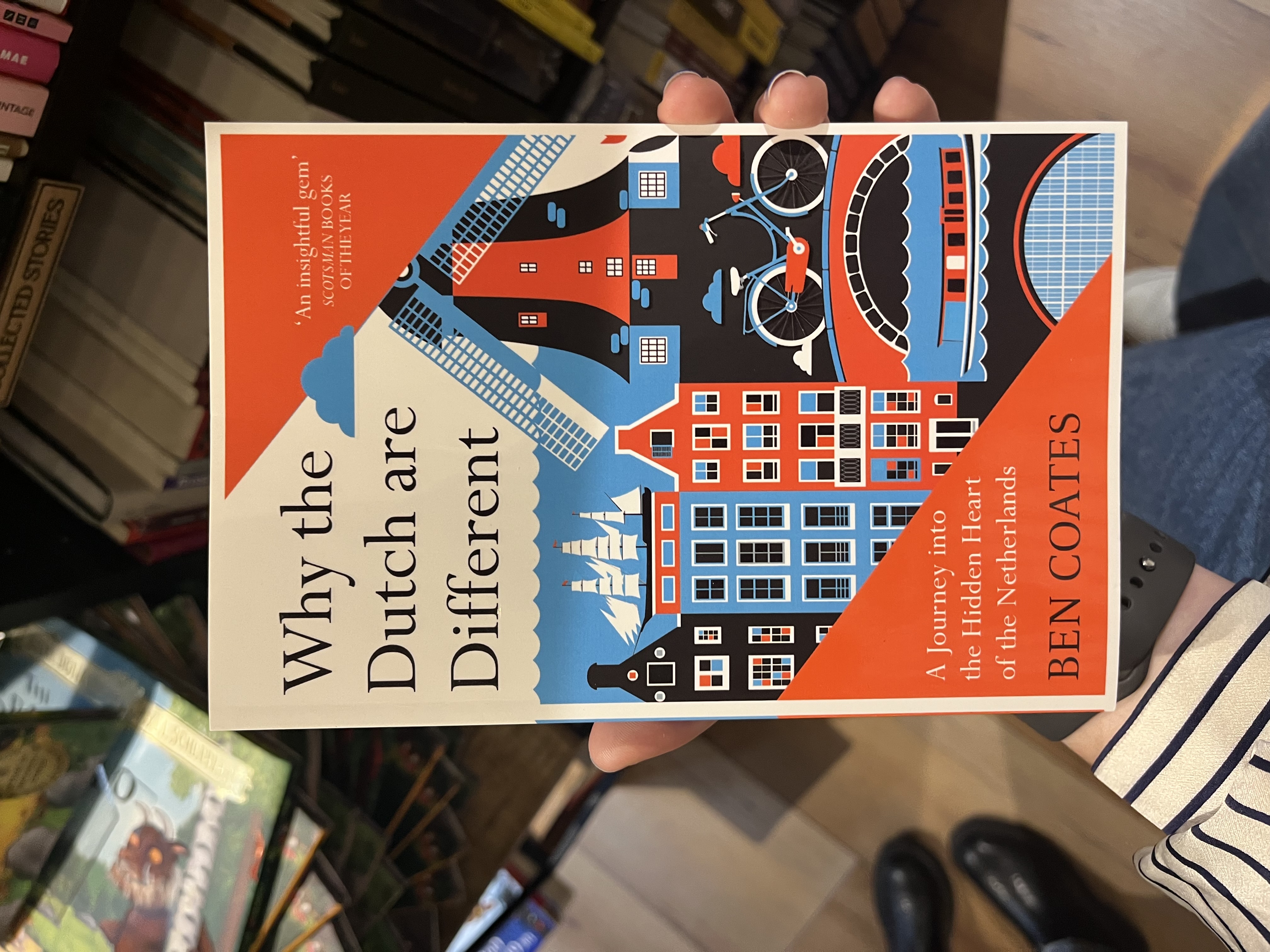
1. Dutch people are rude.
This is by far the biggest warning I got before I moved to Amsterdam. "Good luck making friends; Dutch people are so rude!" Dutch people are known to be short in their responses, have little enthusiasm, and get straight to the point. I think it's wrong to say that Dutch people as a whole are rude; it's not fair to say that about the entirety of a country with more than 17.7 million people. Sure, there are some rude people--I've had doors slammed in my face and zero eye contact during grocery store check-out. But I've also had these experiences in America. There are rude people everywhere, and as long as you're polite, you'll find very kind and friendly people in the Netherlands as well.
Dutch people are very direct. A key part of Dutch culture is their directness, and most Dutch people will not shy away from telling you when they don't like something you've done or asking you a question that would otherwise seem rude in American culture. For example, one of my friends went on a date with a Dutch man. Within the first 10 minutes of the date, they seemed to be hitting it off and he promptly asked her "When is this going to be over?" My friend was shocked and a bit hurt, before realizing that the man was also having a great time on the date, but was just genuinely curious about the timing of the rest of their date. This is a prime example of Dutch directness than can often be perceived as rudeness. Although this Dutch to-the-point-ness can be quite jarring at first, I really came to appreciate it. Dutch people don't harp on flowery language or avoid asking the important questions. They get straight to the point, creating efficiency and avoiding confusion in conversations. This became most clear to me as an American student in a Dutch university. I was shocked by the way professors and students communicated with each other. Let's take a look at what I would write to my professor versus what my Dutch peer would write:Hello Professor van der Berg
I hope this email finds you well and healthy!
My name is Anna Alberti, and I am a student in your Information Retrieval course (course code:098IR200). I am emailing to ask about my attendance for Thursday's lecture. Unfortunately, our class meeting time overlaps with my other course, Database Systems (course code:097DS200). I was wondering if a recording of your course's lecture will be published so that I can remain on track with the course content.
Please let me know if this is a possibility or if you have any suggestions on how I should proceed with this matter.
Thank you for your time,
Anna Alberti
Jan,
I have another lecture at the same time as ours on Thursday so I will be absent.
Femke
My email is drafted quite differently than Femke's, and I think that this is a prime example of Dutch directness. Over my time in the Netherlands, I became quite comfortable with this and learned to appreciate it.
2. Everyone is high.
It's pretty well known that the Netherlands is a very liberal and accepting country, and that also applies to their drug tolerance. Smoking weed is not a taboo subject for the Dutch as it is for Americans, and there are many coffeeshops where adults can legally purchase marijuana throughout the country. And yes, you can also get a coffee at these coffeeshops, but if you're just looking for a relaxing latte, head to a cafe, not a coffeeshop.
While the country's progressive approach to marijuana means that it is readily available, it does not mean that everyone is high. In actuality, most of these coffeeshops are populated with tourists or stag do parties from the UK. Dutch people do partake in the smoking festivities, but in my opinion, not notably more so than usual. In my experience, the relaxed policing of marijuana in the Netherlands shows an alternative approach that works. I can confidently debunk the stereotype that Dutch people are always high.
3. It always rains.
*Sighs in Dutch*
Yes, the Netherlands is a very rainy country. The Dutch rain is like a terrible ex: consistently unpredictable and always lingering. If you’re not used to consecutive rainy days, don’t worry. After the storm comes a rainbow! No, literally…
The rainy weather can be quite cozy and really makes you appreciate the sunny days. Plus, there are several ways the Dutch have taught me to bear the rain:
First, choose your raincoat carefully. There is a huge difference between a water-resistant coat and a waterproof coat. Let’s go back to my analogy about rain being your terrible ex. A water-resistant coat is equivalent to keeping their number in your phone, while a waterproof raincoat is a hard cut-off; I’m talking blocking their number and unfollowing on Instagram. The only way to comfortably avoid your ex—I mean rain—is with a waterproof raincoat. I unfortunately learned this the hard way while biking home from university in my water-resistant rain coat one day.
Next, if you’re biking consistently in the Netherlands, consider covering your bike seat with a plastic grocery bag. Sure, you can buy a cute, patterned bike seat cover from a shop. But, if you want to truly embrace Dutch culture, you should put a signature blue Albert Heijn bag on your bike seat. Sustainable, frugal, and stylish!
The Dutch are known for their innovative windmills, and their inventive spirit even extends to the rain. They have developed asphalt that absorbs water on major highways to ensure safe driving.
So yes, it rains a lot. But it is bearable and as always, it’s all about your perspective!
4. Dutch food is gross.
Dutch food gets an extremely bad rap. It’s stereotyped to be the three Bs: bland, boring, and beige. Let’s assess some stereotypical and common Dutch foods for these qualities.
Kaasbroodje
Directly translating to “cheese on bread”, this dish is a Dutch lunch. My older sister, Ellie, can confirm that her Dutch colleagues regularly whip out two slabs of bread with a single slice of cheese between them for their lunch. This is a prime example of the three Bs.
Stamppot

Another typical Dutch dish is a stamppot, which is mashed potatoes with a vegetable mixed in (usually kale, spinach, or endives), a sausage, and gravy. There are many variations of this, and you can add sauteed onions, bacon, etc. It’s a very homestyle meal, and I find it very comforting and delicious. Bland? A bit. Boring? A bit. Beige? Yeah, a bit.
Fries
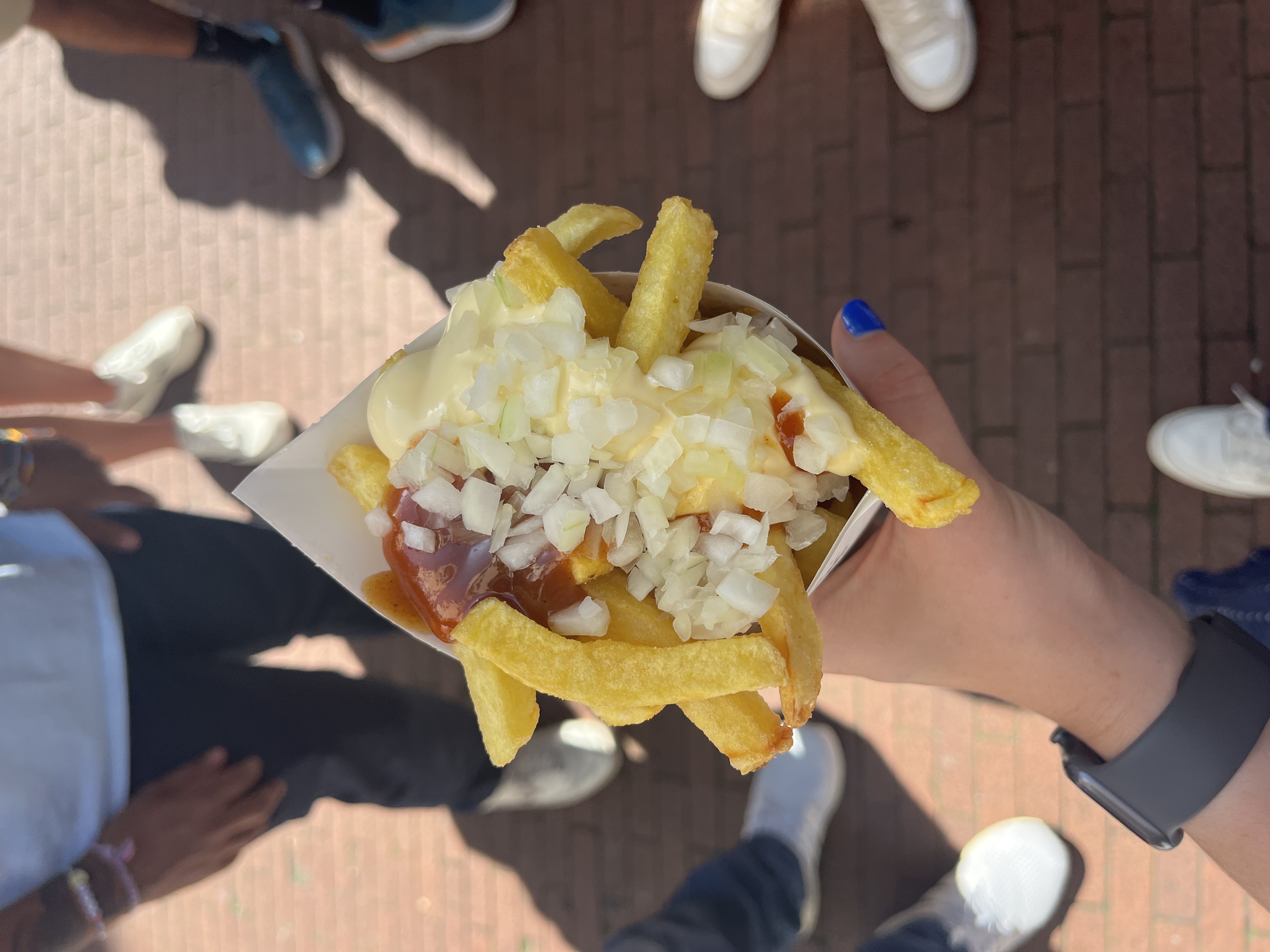

Don’t tell a Belgian, but I think the Dutch have the best fries. You can find fry stands all over the country, generously filling paper cones of freshly fried potatoes with your choice of sauce. At first glance, this food definitely hits the three Bs. We’ve all had good fries before. But where this Dutch delicacy diverges from the three Bs is the typical sauce and toppings. There are generally three main ways Dutch people each their fries. First, with mayonnaise on top. This might sound really unappealing to Americans, but once you try it and get used to it, it’s actually pretty good. Second, currysauce and fresh onion. If you like the taste of curry, you’ll love this sauce! Third, and most shocking, is the pindasaus and onion, which is peanut butter sauce and onion. Peanut butter and fries might seem like a really odd combination, but to my international friends, so is peanut butter and jelly! So, don’t knock it until you try it! Dutch fries aren’t your typical fries—they are interesting and exciting!
Pannekoeken, Poffertjes, Stroopwafels
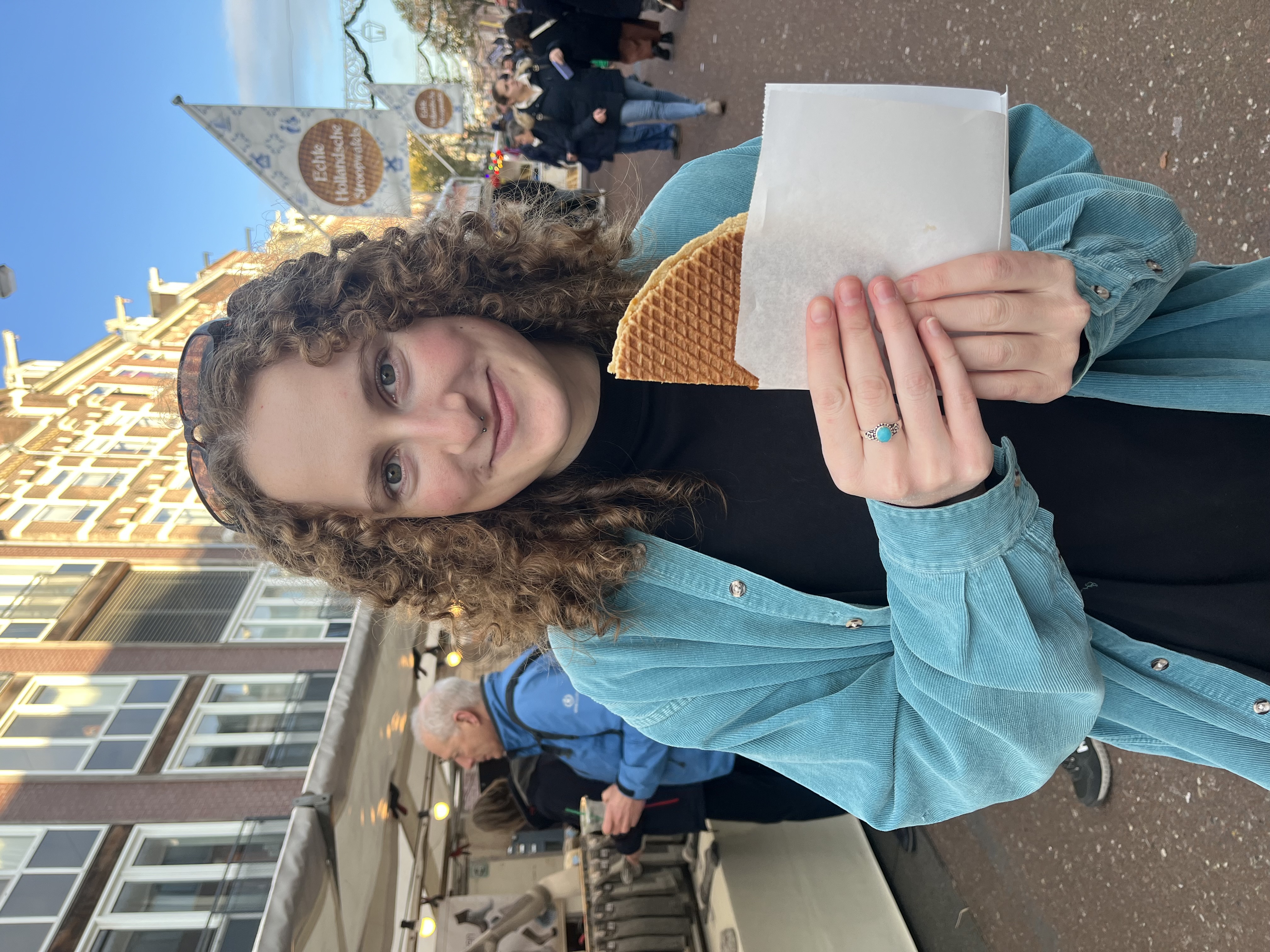

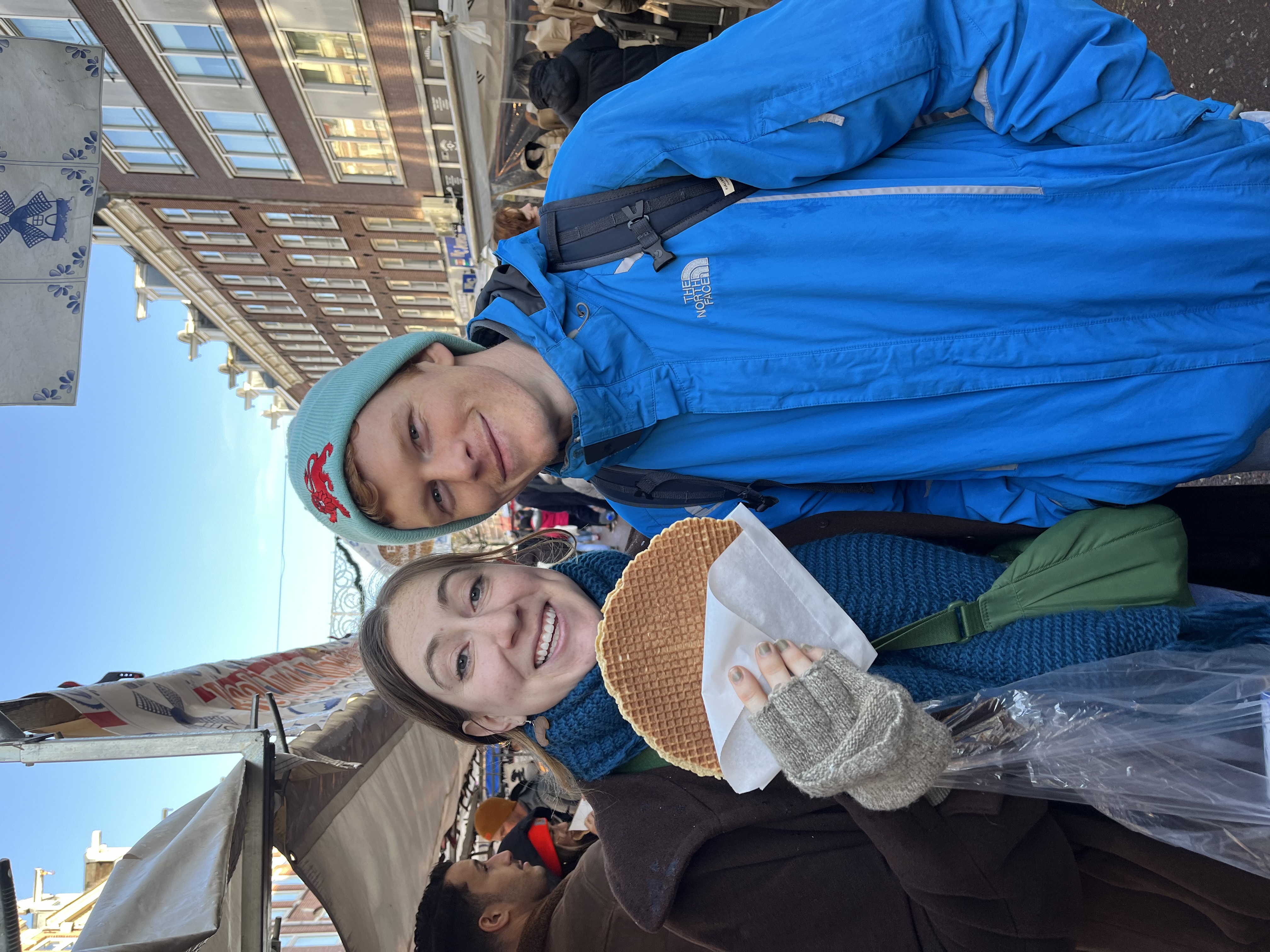
The Dutch know how to do sweets. Pannekoeken are large, flat pancakes. More similar to a crepe than an American pancake, pannekoeken can be filled with both sweet and savory toppings. I’ve also had pannekoeken with ham or apple baked into it! Very delicious and different.
Poffertjes are my favorite sweet Dutch food. These mini pancakes are not only adorable but also incredibly delicious. While typically eaten with butter and powdered sugar, there is also an option to add Nutella to these mini pancakes puffs.
Stroopwafels are famous waffle/syrup cookies from the Netherlands. You can find prepackaged stroopwafels at any grocery store in the Netherlands, but the best way to eat them in fresh! You can watch your own fresh stroopwafel be pressed, cut down the center, and filled with gooey syrupy deliciousness at any local market.
Also, Indonesian food in the Netherlands is very popular due to the Dutch colonization of Indonesian in the 1600s. While this food has a Dutch twist on it, it brings a new flavor palette to typical Dutch cuisine!
Dutch food is not always bland, boring, nor beige. To completely write off an entire cuisine based on stereotypes would mean missing out on the amazing dishes and treats that it has to offer. Trying authentic Dutch food is a very fun experience!
5. Bikes are everywhere.

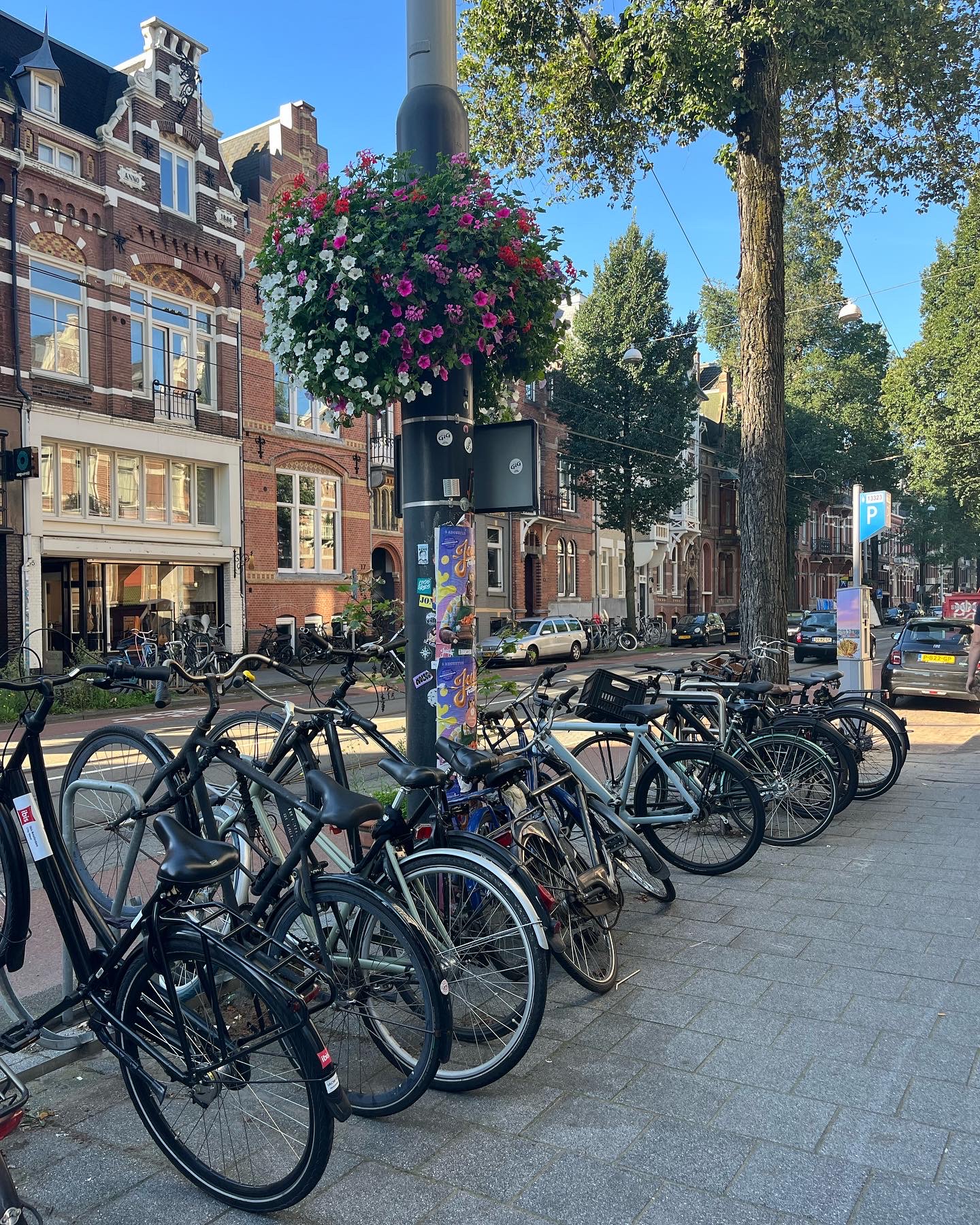

Yes. Definitely can confirm! No matter what city you are in, bikes will be everywhere in the Netherlands. Biking was one of my favorite parts about living in Amsterdam. You can get anywhere by bike, which is a pretty atypical experience for an American. It’s great exercise, sustainable, and just genuinely fun.
I love observing the Dutch ride their bikes. It’s been their main form of transportation since they were in diapers, and it truly amazes me what they can do on their bikes. I’ve seen Dutchmen eat a full meal while riding their bike, wheel their luggage beside them as they ride, and even see a couple hold hands and make out on their bikes side by side! Watching the Dutch on their bikes is a whole new level of people watching.
Photo gallery by Dutch city
I’d be more than happy to get and give some recommendations for any of these beautiful Dutch cities. Feel free to contact me if you want to chat!
Amsterdam
Utrecht



Haarlem






Groningen




Maastricht









Rotterdam









Delft





Leiden






Gouda





Nijmegen





Lisse





Schagen






Zaans Schans



